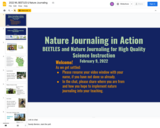
Running Slide Deck from WL BEETLES & Nature Journaling Online Sessions
- Subject:
- Environmental Literacy and Sustainability
- Material Type:
- Learning Task
- Author:
- Tiffany Lodholz
- skylar primm
- Sandy Benton
- Date Added:
- 02/09/2022

Running Slide Deck from WL BEETLES & Nature Journaling Online Sessions
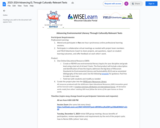
This is a brief overview of the collaboration, the timeline of activities, and participation and project requirements.

Author: The Genius Group of MadisonGrade Level: fourth/fifthContent Area(s): Social studies, First Nations history, literacy, environmental literacyContext: Students will learn about the American Indian Movement in the United States. The unit is divided into three sections in which primary source images and texts drive inquiry and understanding of this time in history. A slide deck featuring these sources is used in each of the three sections.Section One is a learning provocation with opportunites for rich discussion and wonderings.Section Two is history of the AIM protests and demands, with extra attention to the environment issues revealed.Section Three is for further study, some supplemental resources to investigate the Embridge pipeline dispute with Ojibwe BadRiver Tribe and the history of protests in northern Wisconsin about treaty rights regarding spearfishing.

Storytelling is an important part of traditional Native American culture. It is important to remember that some stories can only be told in the Winter out of respect for the names that can only be told when the snow is on the ground. Please use the references shared on this page in accordance with the respectful practice of Winter only storytelling. As always, it is best to have the guidance of an experienced elder and / or storyteller when planning best use in the classroom. This unit blended the use of traditional knowledge with textbook based science concepts to show the interconnection between them. Many traditional stories give an explanation of plant and animal adaptations that have a scientific benefit for the organism.
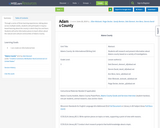
Through a series of three learning experiences, taking place across multiple weeks, students will participate in inquiry-based learning about the county in which they live and learn. Students will write informative pieces to teach others about the natural and cultural communities of Adams County.

In this short unit of study, kindergarten students will learn about adaptations and behaviors that both domesticated and wild animals implement to protect themselves and their young. This unit is a series of 3 video lessons and 2 field-based lessons.

This text set focuses on the Anishinaabe names for the Wenabozho Ominisan. Wenabozho is an important Anishinaabe figure, a trickster. Ominisan is the Anishinaabe word for islands. Wenabozho Ominisan (the islands of Wenabozho) is the Anishinaabe way to refer to what is also known as the Apostle Islands archipelago.

As a high school science educator at Lac Courte Oreilles Ojibwe school, indigenous culture and teachings are incorporated into my instruction as much as possible. This text set was incorporated in my Astronomy class tying in Ojibwe Moons and seasonal constellations with northern Wisconsin phenology. A discussion of text set implementation is also included in this OER.Lac Courte Oreilles Ojibwe School is a Bureau of Indian Education/Tribally controlled school catering to students who are themselves tribally enrolled or descendants of a tribal member.

Please Remix this template for your purposes.

This series of 5 high-quality, standards-aligned, inquiry-based activities have been field-tested by first grade students and families of Wequiock Children's Center for Environmental Science during Safer At Home orders. These activities encourage students to use natural areas around their homes and in their neigbhorhoods as they improve their science observation skils. The materials used are ones generally available at home and the activites require little preparation on the part of caregivers.Created as a part of a WISELearn OER Innovation project, Connect, Explore, and Engage: Using the Environment as the Context for Science Learning was a collaboration of the Wequiock Children's Center for Environmental Science and the Wisconsin Green Schools Network. One of the goals of the project was to create standards-aligned lessons that utilize the outdoor spaces of the school (as well as those of the students' homes). Each section of this resource is an individual activity. While each activity builds on the previous ones, it is possible to use them individually.The observation protocol "I Notice, I Wonder, It Reminds Me Of, I Think Maybe" has been adapted from that of the BEETLES Project.The title image was used with permission and is courtesy of Joe Riederer.

The resources and project outline are the collaborative efforts of the Chain Exploration Center Grades 5 & 6 teachers and a FIELD Edventures educator. The goals of the project were for students to take civic action on environmental issues of local importance. Additionally, the teachers wanted students to become familiar with the four habitat areas, and observable species present in each area. It was decided that conducting a bioblitz across 4 days–one in each area–would provide students with data that would be the basis for individual and small group investigative questions, issue definition and investigation, and a proposal for conservation, protection, and/or restoration of natural resources, habitats, or species of Wisconsin. Students then presented their proposals to their state senator in a visit to the Wisconsin State Capitol.

The three teachers of the third and fourth grade team joined forces to create these standards-aligned resources. We discussed a middle-school curriculum unit, Birds & Flight, that one of us had written about fifteen years ago regarding using math to study and understand birds in different ways. As a team, we translated some of those concepts into middle-elementary activities.We discussed that the lessons could be taught in any order, but recommend using the Actual Size lesson as a fun capstone project.
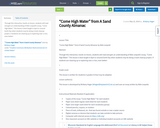
Through this interactive, hands-on lesson, students will read and gain an understanding of Aldo Leopold’s essay, “Come High Water”. This lesson is best taught in April or around Earth Day when students may be doing a trash cleanup project. If students are cleaning up or exploring near a river, even better!
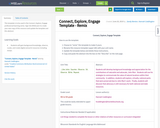
This template is to be used in the Connect, Explore, Engage professional learning series. Sign into WISELearn to create your own copy of this resource and update the template and this abstract.
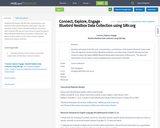
Students will research the life cycle, characteristics, and behavior of the Eastern Bluebird (Sialia sialis). They will regularly monitor Eastern Bluebird nestboxes and collect data using the Siftr app and may choose to report the data to BRAW (Bluebird Restoration Association of Wisconsin). The data and observations can be used in various ongoing inquiry and research activities.
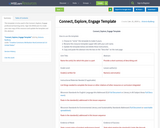
This template is to be used in the Connect, Explore, Engage professional learning series. Sign into WISELearn to create your own copy of this resource and update the template and this abstract.
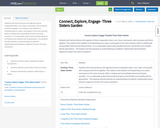
Students will read and discuss the legends of three inseparable sisters, corn, bean, and squash, who only grow and thrive together. This relates to the tradition of interplanting corn, beans, and squash in the same mounds, which is widespread among Native American farming societies. It is a sustainable system that provided long-term soil fertility and a healthy diet for generations. The students will also develop an understanding of symbiotic relationships found between organisms living in the same ecosystems.
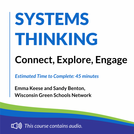
This online learning module guides educators through an introduction to systems thinking and mental models. Systems-thinking skills are integrated into Wisconsin Standards for Environmental Literacy & Sustainability. The ability to examine and respond to new information is critical to prepare students to understand, analyze, and address the major environmental and sustainability challenges facing Wisconsin, the United States, and the planet.

This culturally-relevant text set offer different perspectives for students to see as well aswonderful conversation starters. Students learn of different careers within the IndigenousWorld. Some of those careers being: Traditional Seed Keepers, Gardeners, KnowledgeKeepers, Storytellers, and More!Dig your bare feet into the soil and feel those connections to your ancestors, the land, theplants, animals, and all things. We are all connected. Let’s work together and connect our pastto the present, for the future... of learning!

The "Dairy Products in Wisconsin" unit for high school English Language Learners focuses on enhancing various linguistic skills through practical and engaging activities. I created this slideshow as a daily launch for mini-lessons in ag-themed language activities for my students in Food Science learning English as an additional language.